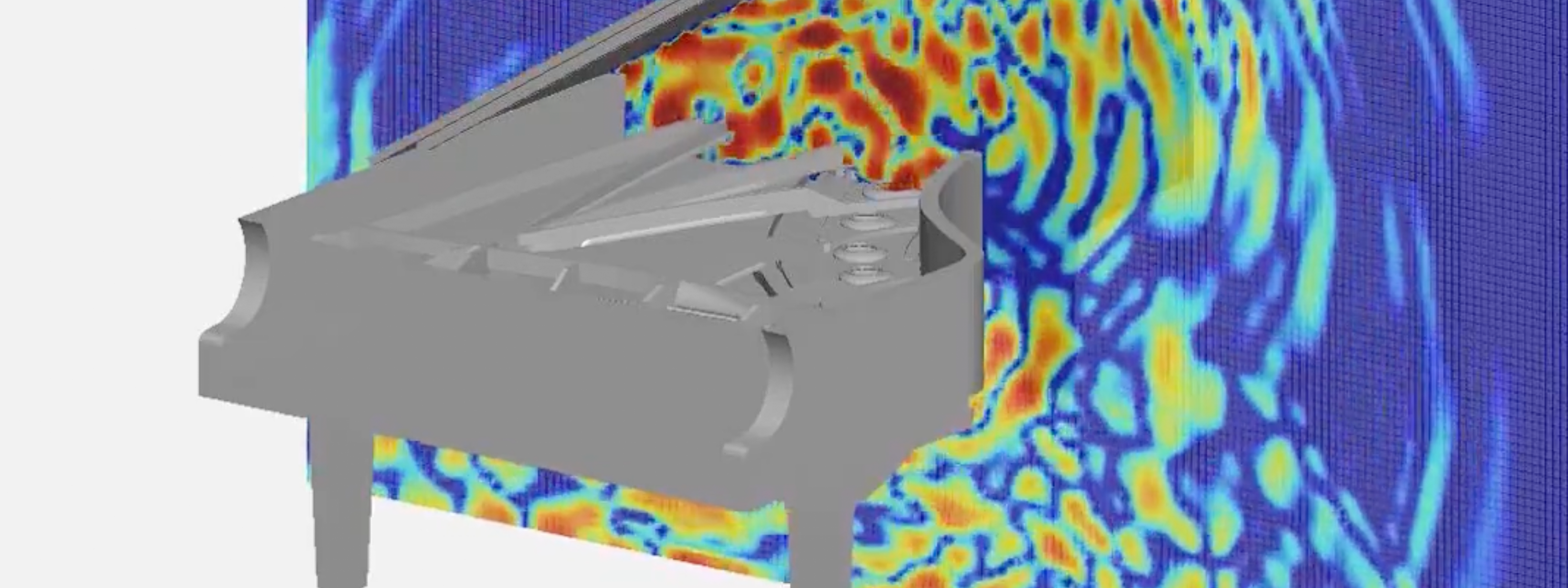Physical Modeling and Simulation of a Piano

Visualization and auralization of the sound-producing mechanism of Piano
This is a visualization and auralization simulation technology based on a high-precision physical model of a piano. This technology quantitatively clarifies the causal relationship between piano design specifications (cause) and sound/touch (effect), i.e., “what changes in piano design specifications will result in changes in sound/touch.” For example, it enables us to predict the characteristics of the sound quality of each hammer felt manufacturer or changes in sound quality due to changes in cast iron plate rigidity. Therefore, it can be used by designers when making decisions.
Predicting the “sound” of a piano with a physical model simulation
Piano manufacturers’ efforts to achieve the ideal “sound” are nothing but finding the optimal solution for the huge piano system in its entirety. However, relying solely on empirical methods (trial-and-error methods using actual prototypes), as has been done in the past, is particularly inefficient for pianos that have a large number of design and error factors. This technology enables us to predict how the “sound” will change when the design specifications of a piano are changed, by conducting a large-scale computer simulation based on a high-precision physical model that takes into account the interaction of the piano’s components (hammers, dampers, strings, soundboard, cast iron plate, rim, braces, etc.) and air.
Predicting the “touch” of a piano with physical model simulation
It can be said that players, especially professional performers, make full use of the piano’s mechanism to the utmost limit to create “music” that impresses the audience while sensitively capturing “sound” and “touch” with their ears and fingers. “Touch” here means the physical force that the player’s fingers receive from the keyboard (keyboard response to player action). This technology enables us to predict how the “touch” will change when the design specifications of the piano action are changed, by conducting computer simulations based on a high-precision physical model that takes into account the interaction between the parts (hammers, dampers, whippens, keys, etc.) that make up the piano mechanism (action).
How it Works
We model the components of the piano (hammers, strings, soundboard, cast iron plate, etc.) and the air, and numerically solve the equations of motion that take into account the interaction between them on the time axis to calculate the motion of each component and the sound pressure at an arbitrary observation point in the air. By animating the calculation results, the behavior of the piano and the acoustic radiation can be visualized. In addition, the sound pressure waveform that is obtained is converted to DA and output as audio to make it “audible”. By using MIDI data of various pieces of music recorded by Yamaha Disklavier as input for the above calculation, it is also possible to synthesize music according to the design specifications of the piano.
Future Developments
Since the essence of piano performance lies in the interaction between the piano and the player, our ultimate goal is to build a physical model simulation technology in which the piano, air, and the player (fingers, ears, intellect, etc.) are one system.
